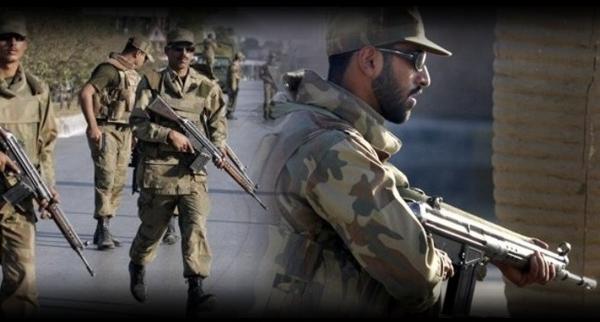|
|
|
Brig Shaukat Qadir
(Retired)
On Friday at about 2pm, a mosque in Rawalpindi was attacked
by six or seven terrorists, leaving 40 dead and 84 wounded. The dead include a
serving major general, 11 serving and retired army officers, five soldiers and
also 13 children, most of them scions of army officers. The wounded include a
retired four-star army officer.
Tehrik-e-Taliban Pakistan (TTP) was quick to assume responsibility, reaffirming
my contention that the Mehsud chapter has infiltrated back through Kurram and
Khyber agencies and is again ensconced in Orakzai Agency. Wali-ur-Rehman, a less
virulent leader compared to Hakimullah Mehsud, spoke to the BBC, claiming
responsibility. He likened the mosque in Rawalpindi to the one in Medina which
was destroyed by the Prophet Mohammed (SAW). He went on to state that such attacks
against the military would continue.
It is worth pointing out again that this attack, like all the previous ones in Rawalpindi and Lahore, was executed by Punjabis, although they were trained by the Mehsud TTP. There seems to be no dearth of cannon fodder for these terrorist organizations from Punjab, Pakistan’s heartland, where, bred on distorted religious extremism, pitiful youths waste their lives and kill indiscriminately.

Soldiers arrive near the site after the attack
First, the significance of this particular mosque: it is located in the heart of the old cantonment on a street called Parade Lane. To its west, a kilometer away, lies a huge apartment complex housing over 500 serving officers and their families; to its south, the same lane extends another kilometer to a residential complex for senior army officers, including a number of generals; and to its north-west, only a couple of kilometers away, is a residential complex for about 300 families of retired officers of various ranks from brigadier on down.
Thus, on any given Friday, the afternoon congregation would
be expected to include a large number of serving and retired army officers and
their families.
The plan of attack was tactically sound. One suicide bomber was supposed to
enter the mosque at the beginning of the Khutba, the cleric’s pre-prayer
address, and blow himself up. That explosion was the signal for two or three
terrorists to lob grenades over the boundary walls on either side of the mosque,
which would compel the congregation to try to escape through the exit. Another
two or three terrorists armed with AK-47s had placed themselves across the road
to open fire at those trying to escape, while those lobbing grenades would
continue doing so from either side to maximise the murder and mayhem.
All mosques throughout the country are now constantly guarded by three or four armed police personnel, particularly on Fridays and during Eid congregations. One of them spotted the suicide bomber while he was lurking in the area, waiting for the Khutba to start. Since his actions seemed suspicious, the police tried to prevent him from entering the mosque. When the terrorist tried to force entry, a policeman grappled with him, forcing him to commit suicide outside the entrance, taking along only that brave policeman.

Soldiers secure the area near the site of the suicide attack
As planned, the terrorists on the sides of the boundary wall began to lob grenades as soon as they heard the explosion. However, those across the road had witnessed the aborted attempt of the suicide bomber and modified their plan, trying to force an entry inside the mosque. The remaining policemen managed to prevent them doing so – had the original plan succeeded, the dead and wounded would have been multiplied manifold.
The upside of this attack is again the fact that merely through on-the-job training, the police force, which was previously totally inept, is improving. Not only did those guarding the mosque spot the suspicious suicide bomber and prevent his entry, the remaining three policemen spiritedly engaged the terrorists with AK-47s. Within minutes members of the army-trained elite police force, who were patrolling the area, had arrived to reinforce the security personnel and an army contingent, which is constantly on standby for any contingency, was not too far behind.
Of the remaining five or six terrorists after the suicide bomber killed himself, two blew themselves up when they were about to be captured, two were killed in the firefight and at least one, perhaps two, managed to elude capture. Official sources have claimed that there were only five, including the suicide bomber, and all were dead; eyewitness accounts put the total number at six or seven. What is more, the fact that a house-to-house search continued well into the evening, hours after the firing had ceased, lends credence to the likelihood that one terrorist or more eluded the security personnel.
I have stated repeatedly that the hapless citizens of Pakistan are destined to be subjected to such attacks for some years to come. Most are likely to be against “soft civilian targets” in markets and other everyday places as we have been witnessing in Peshawar recently. Some are likely to be better planned, like this one on Friday, which was obviously intended to target serving and retired military personnel as well as their children.
It never ceases to amaze me that those ordering such attacks
don’t realise that, far from breaking the will of the nation, they are only
cementing the resolve of the citizens of this country. Even those who are
burying members of their family continue to reassert their resolve to rid the
nation of this scourge.
We live in constant insecurity, but we will survive.